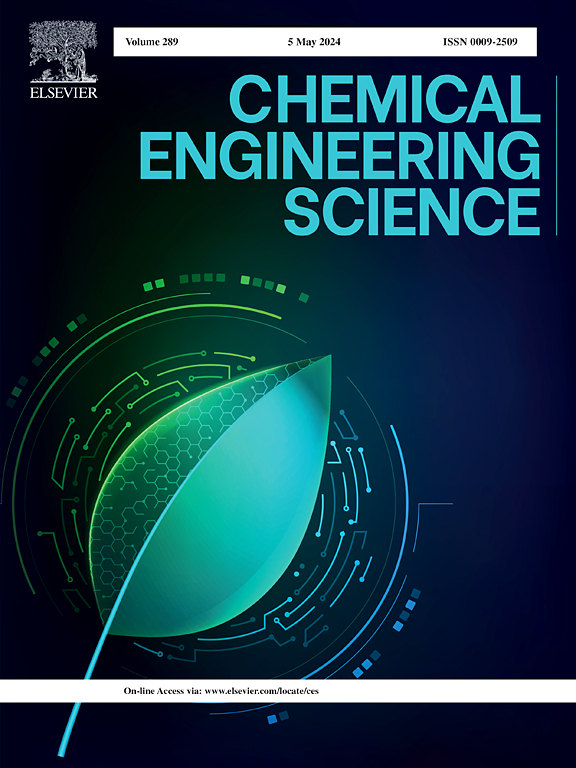Modeling of bubble formation in viscous fluids considering the influence of gas jets
IF 4.1
2区 工程技术
Q2 ENGINEERING, CHEMICAL
引用次数: 0
Abstract
A theoretical method was developed for modeling the non-spherical axisymmetric bubble formation by incorporating two sets of evolution equations on arbitrary surface elements: a Rayleigh-Plesset type equation for the radial expansion and a force balance equation for vertical motion. The proposed method considered the morphological deformation of gas jets based on the free turbulent jet theory of the circular section. The calculated results were compared satisfactorily with the experimental shapes in oil and polyacrylamide aqueous solutions, especially for the shapes featured with sharp tips accounting for jet instabilities. The mean relative errors of the bubble volume, the surface area, the height, and the weight were respectively 5.78%, 4.22%, 3.01%, and 4.67%. The time evolution of force amplitudes on surface elements was examined. At early stage, the radial expansion dominated while the vertical elongation was inhibited. As the bubble volume increased, the positive vertical resultant force made the element elongated to form sharp tip or neck. In particular, the viscosity increased the damping rate, thus suppressing the element fluctuations, while the shear thinning effect weakened the suppression. The contributions of the gas chamber to both the jet instability and the increment of penetration length were analyzed, as these contributions affected the bubble detachment.
考虑气体射流影响的粘性流体气泡形成模型
提出了一种基于任意曲面元的两组演化方程(径向扩展的Rayleigh-Plesset型方程和垂直运动的力平衡方程)来模拟非球面轴对称气泡形成的理论方法。该方法基于圆形截面的自由湍流射流理论,考虑了气体射流的形态变形。计算结果与油和聚丙烯酰胺水溶液中的实验形状进行了满意的比较,特别是具有尖尖的形状,这说明了射流的不稳定性。气泡体积、表面积、高度和重量的平均相对误差分别为5.78%、4.22%、3.01%和4.67%。研究了表面单元受力幅值的时间演化规律。早期以径向扩展为主,纵向扩展受到抑制。随着气泡体积的增大,正的垂直合力使元件伸长,形成尖锐的尖端或颈部。特别是,黏度增加了阻尼率,从而抑制了元件的波动,而剪切减薄效应削弱了抑制作用。分析了气室对射流不稳定性和侵彻长度增加的影响。
本文章由计算机程序翻译,如有差异,请以英文原文为准。
求助全文
约1分钟内获得全文
求助全文
来源期刊

Chemical Engineering Science
工程技术-工程:化工
CiteScore
7.50
自引率
8.50%
发文量
1025
审稿时长
50 days
期刊介绍:
Chemical engineering enables the transformation of natural resources and energy into useful products for society. It draws on and applies natural sciences, mathematics and economics, and has developed fundamental engineering science that underpins the discipline.
Chemical Engineering Science (CES) has been publishing papers on the fundamentals of chemical engineering since 1951. CES is the platform where the most significant advances in the discipline have ever since been published. Chemical Engineering Science has accompanied and sustained chemical engineering through its development into the vibrant and broad scientific discipline it is today.
 求助内容:
求助内容: 应助结果提醒方式:
应助结果提醒方式:


